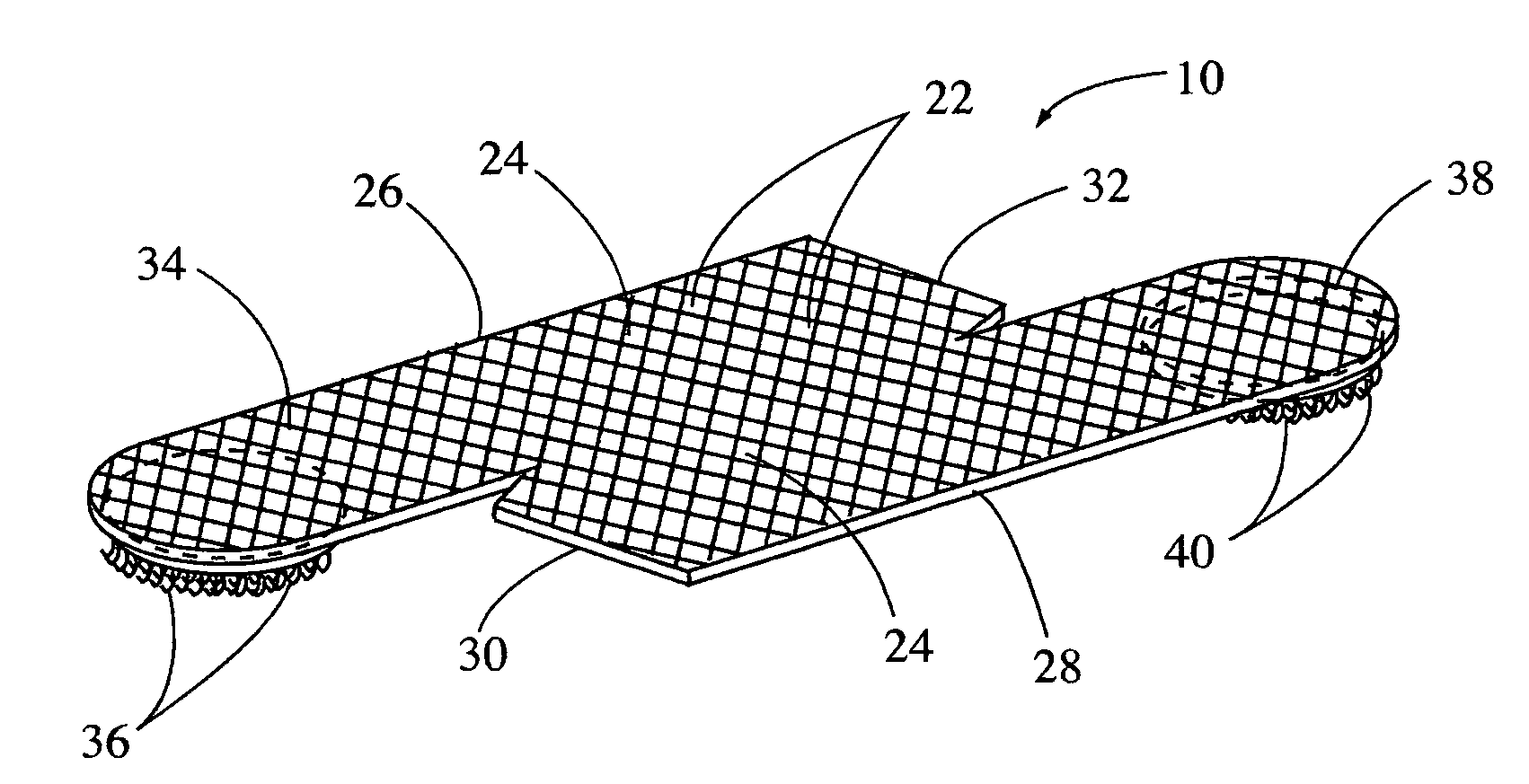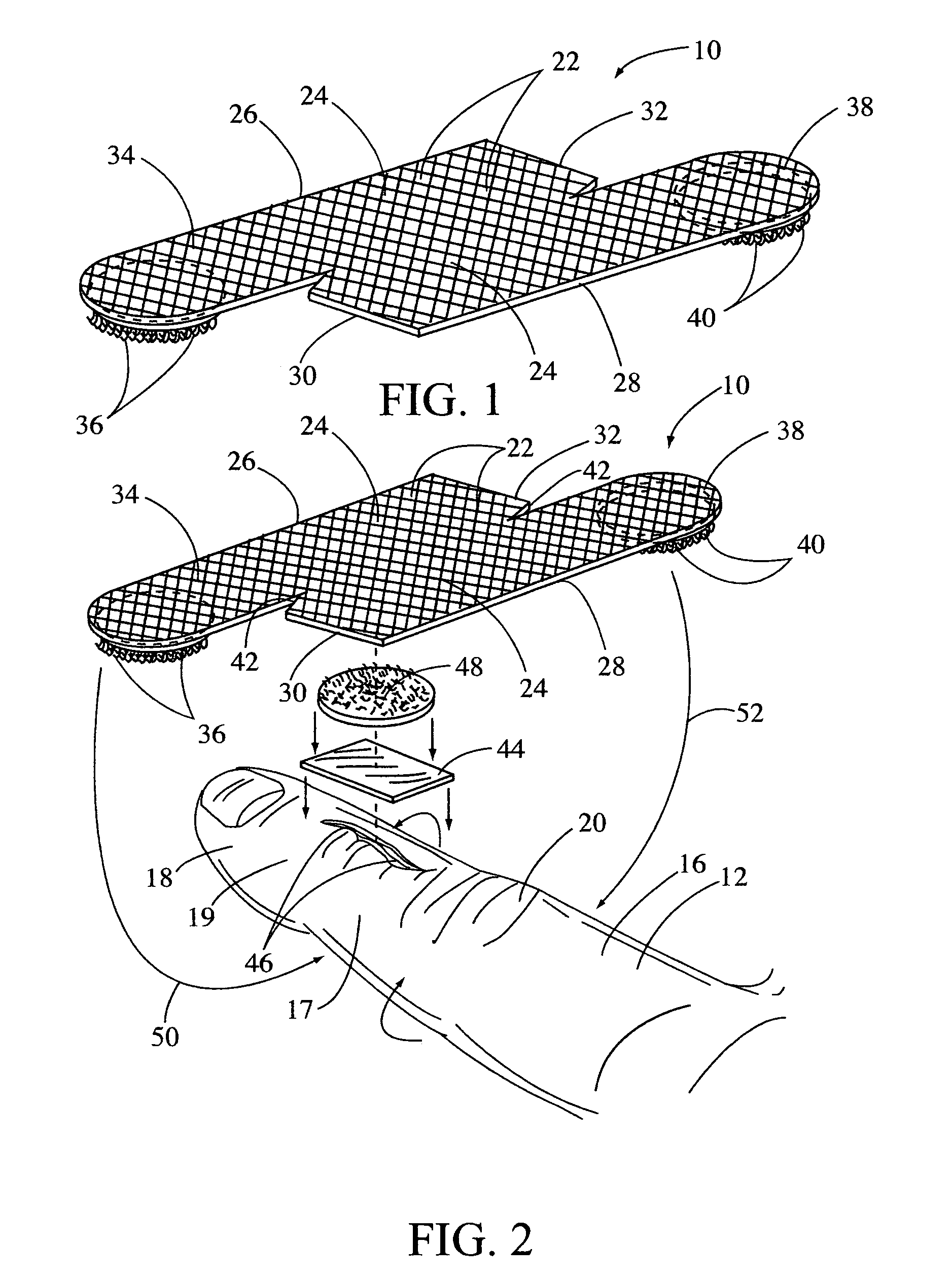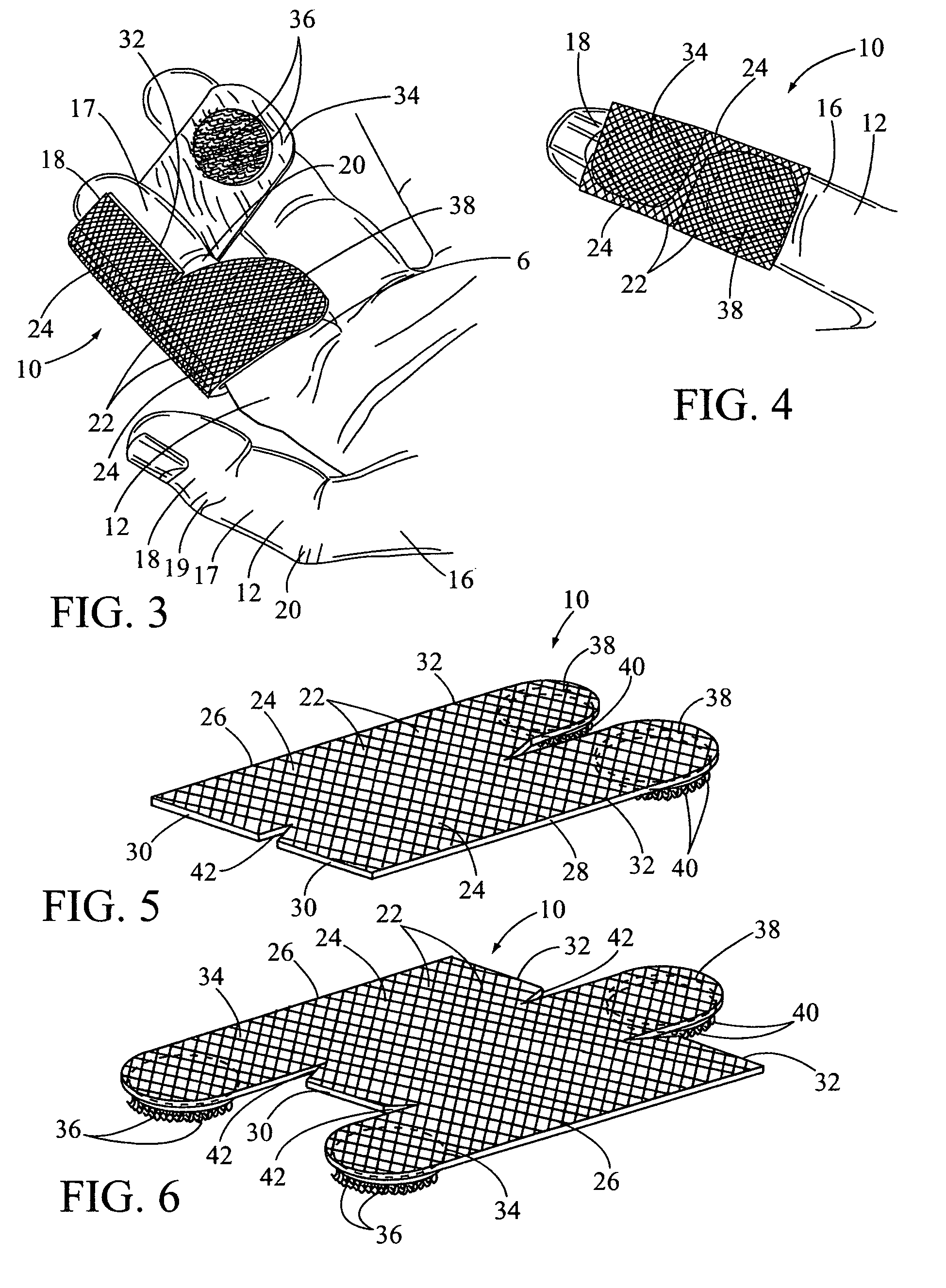Anatomically designed, reusable secondary wound wrap for a digit
a wound wrap and digit technology, applied in finger bandages, non-surgical orthopedic devices, medical science, etc., can solve the problems of skin white and wrinkled, increasing susceptibility to bacteria, and producing pain, so as to improve the healing effect of wounds
- Summary
- Abstract
- Description
- Claims
- Application Information
AI Technical Summary
Benefits of technology
Problems solved by technology
Method used
Image
Examples
Embodiment Construction
[0035]In FIG. 1, a top view of the subject secondary wound wrap is shown and having general reference numeral 10. The wound wrap 10 anatomically designed for receipt around a digit, such as a finger 12, shown in FIGS. 2-4, or a toe 14, shown in FIGS. 5 and 6. The finger 12 includes a proximal phalanx portion 16 and a middle phalanx portion 17 with a proximal interphalangeal joint 20 therebetween and a distal interphalangeal joint 19 disposed between the middle phalanx portion 17 and a distal phalanx portion 18. The toe 14 includes the proximal phalanx portion 16 and the distal phalanx portion 18 with the proximal interphalangeal joint 20 therebetween. In the anatomy of the foot, the finger 12 includes an additional joint or the distal interphalangeal joint 19 while the toe 14 does not.
[0036]The wound wrap 10 is made of a loose weave, stretchable, breathable, non-allergenic and non-adhesive material 22 and is reusable on various types and shapes of primary wound care dressings. The w...
PUM
 Login to View More
Login to View More Abstract
Description
Claims
Application Information
 Login to View More
Login to View More - R&D
- Intellectual Property
- Life Sciences
- Materials
- Tech Scout
- Unparalleled Data Quality
- Higher Quality Content
- 60% Fewer Hallucinations
Browse by: Latest US Patents, China's latest patents, Technical Efficacy Thesaurus, Application Domain, Technology Topic, Popular Technical Reports.
© 2025 PatSnap. All rights reserved.Legal|Privacy policy|Modern Slavery Act Transparency Statement|Sitemap|About US| Contact US: help@patsnap.com



